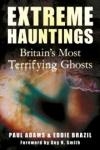
Extreme Hauntings covers the period from the mid-eighteenth century to the beginning of the twenty-first, and shows that no type of building or social class is immune. The authors note that the bulk of the cases date from the twentieth century, but this may be a reporting quirk, with odd occurrences more likely to be recorded than previously, given an expanded newspaper culture, and organisations such as the SPR to which those with stories to tell can go to seek help (a number included here draw on SPR publications).
A few will be well known to the reader with some knowledge of the subject, others less so. They make a useful compilation, and there are references for further investigation. Not all of the incidents recounted are violent, despite the suggestion in the title, and the sensationalist subtitle is somewhat misleading as not all of the cases can necessarily be attributed to ghostly activity, terrifying or otherwise. Some accounts are included more because of the longevity of the activity, and there are clear variations in the degrees of violence, either experienced or feared.
There are more than thirty cases divided into six chapters, though boundaries are not always easy to determine. Some are celebrated classics, such as those in the first chapter: 50, Berkeley Square, Willington Mill, the Morton Cheltenham ghost, and Borley (Adams and Brazil co-wrote, with Peter Underwood, the well-received The Borley Rectory Companion).
Other chapters are more miscellaneous and deal with lesser-known cases, including several that were collected by Brazil. There are examples involving objects too, such as the Hexham Heads, which have received publicity recently in Fortean Times, and a sacrum bone stolen from a mummy which apparently exerted a baleful influence on its new owners. The final chapter returns to the well-known: Hinton Ampner, the Pontefract poltergeist (basis of the film When the Lights Went Out and again covered recently in Fortean Times), Enfield and finally the South Shields Poltergeist. These outliers in the spectrum of ostensibly paranormal events emphasise how distressing encounters can be.
There are no neat conclusions to be drawn from this wide-ranging collection because such diversity cannot be neatly reduced to simple explanations. It is a difficult field of study, with all sorts of interpersonal currents and external influences, such as popular culture, that shape interpretations. The authors have pulled together a decent collection that helps to focus attention on these extreme, though mercifully uncommon, happenings. There is much work to be done in teasing out the factors in order to reach any kind of understanding that does justice to the complexity of the phenomena.

